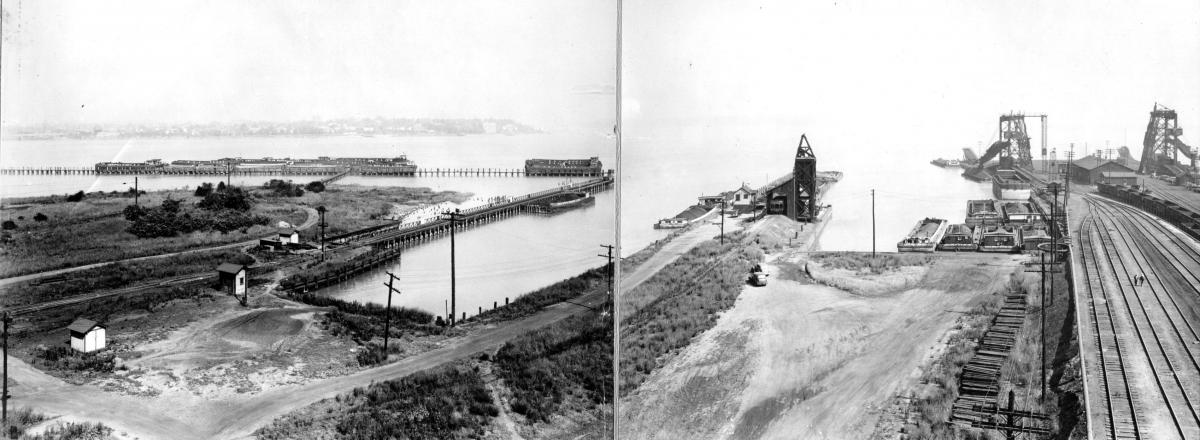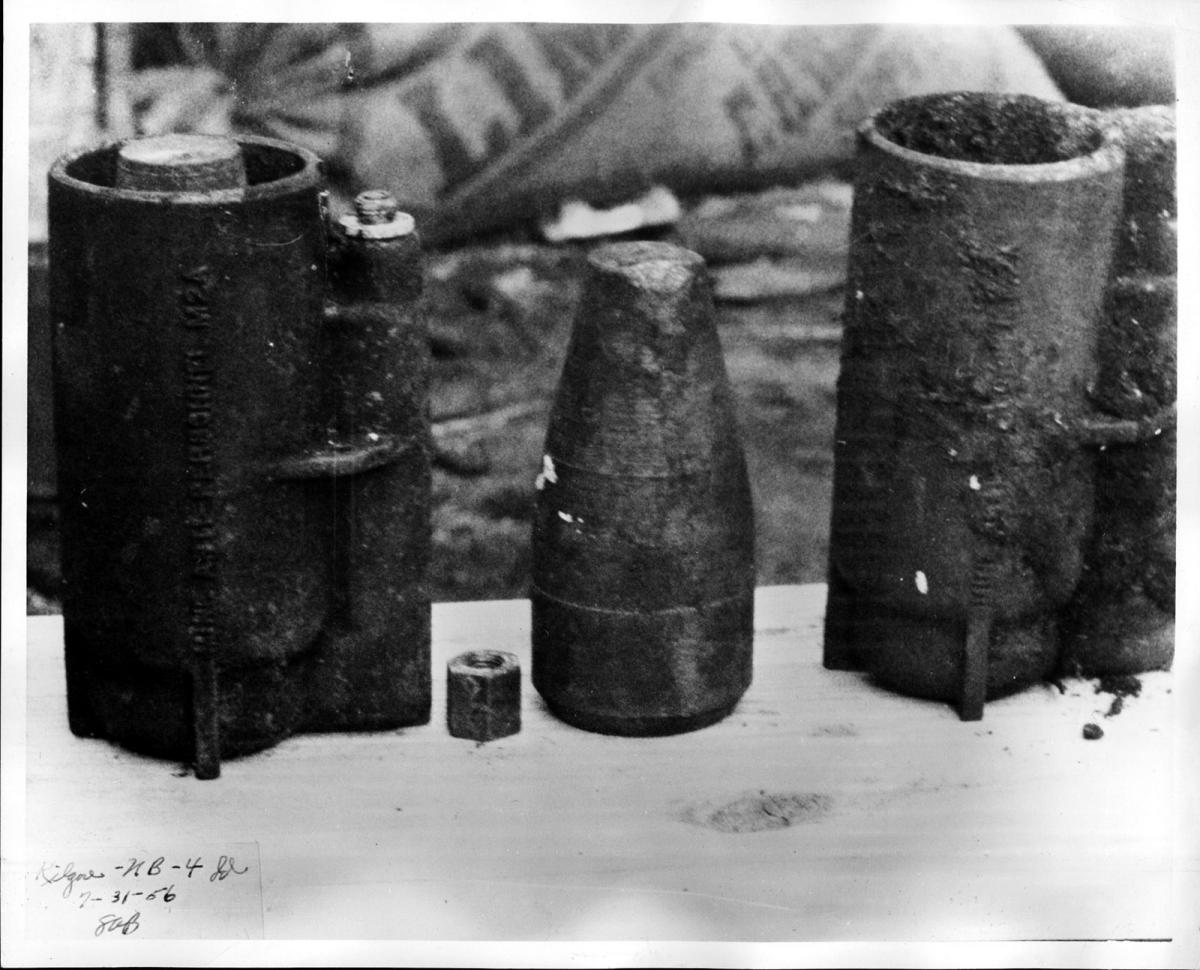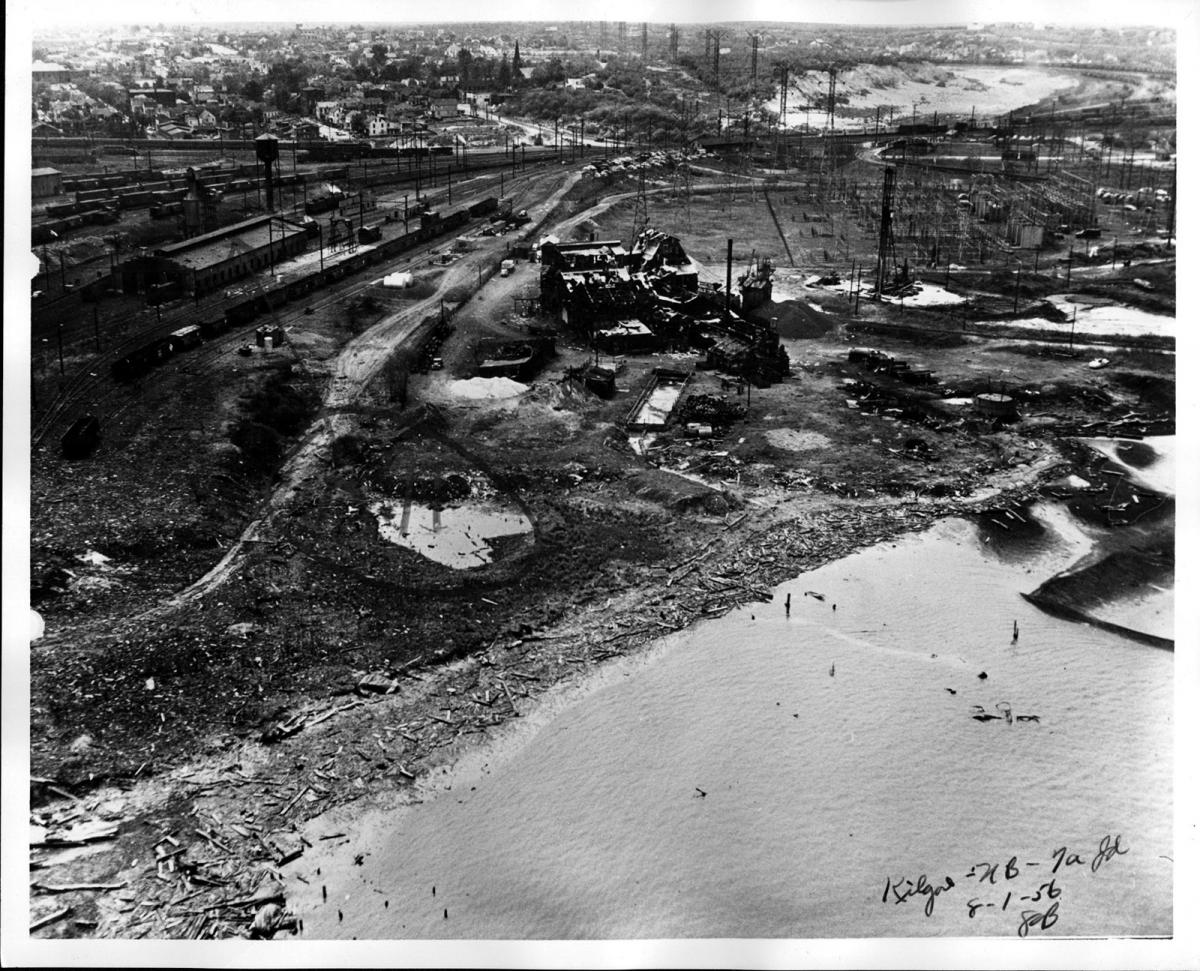On May 19, 1950, four transfer barges and several railroad cars loaded with 420 tons of military explosives suddenly detonated at the Raritan River Port of South Amboy, New Jersey. The result was devastating.
The death toll amounted to thirty-one, most of whom were dockworkers, while more than 350 individuals were injured. The blast also destroyed nearby businesses and homes, blowing out windows as well as the power grid, causing over $10 million in total property damage. Immediately after the blast, officials declared a state of emergency in South Amboy, with state police, military, Red Cross units, and volunteers descending upon the area from neighboring towns.
Short 1950 newsreel showing aftermath of the explosion.
The events that transpired before the explosion proved particularly significant. The Kilgore Manufacturing Company of Newark, Ohio, produced 9,000 boxes of antipersonnel and anti-tank mines destined for the government of Pakistan, while a separate shipment containing 1,800 cases of gelatin dynamite produced by the Hercules Powder Co. was being sent to Afghanistan for commercial sale. The total combined weight of the explosives was 300,000 pounds.
South Amboy was the only terminal in the Port of New York that allowed the transfer of explosives in large quantities, although there were still certain limitations in place that restricted shipments of over 125,000 pounds.

Despite this, the lighterage company in charge of handling the shipment following its transferal from the Pennsylvania Railroad’s cars requested permission from the Coast Guard to temporarily lift the ban. The company received verbal and written permission on May 18.
On the following day, at approximately 7:26 p.m., the explosion occurred at the “powder pier” at the foot of Augusta Street in South Amboy. The cause was the simultaneous detonation of 150 tons of anti-tank, antipersonnel, and gelatin dynamite, triggering a chain reaction that killed 26 employees of the lighterage company, and five coal barge captains; most of their remains were never recovered.
The four barges carrying the explosives, the “powder pier,” the railroad cars, and the piers and equipment in the adjoining waterfront were completely destroyed. In addition, over seventeen barges in the port area were set on fire or sunk. One witness claimed that the sky was “cluttered with debris” that looked like cement blocks and railroad ties.
Three years after the explosion, a three-day search by the US Army unearthed sixty-two live antipersonnel and anti-tank mines scattered throughout the waterfront area.

Ultimately, the disaster resulted in a congressional investigation and lead to the indictment of the Kilgore Manufacturing Company. The Ohio firm was later charged with a record 9,000 counts of munitions violations.
Assistant U.S. Attorney Joseph B. Schwartz said the indictments were 2,500 pages long, eighteen inches thick, and weighed thirty pounds.
The hearings found that the Kilgore Manufacturing Company violated the Interstate Commerce Commission’s regulations by packing detonating fuses in the same case as the explosives, and also cited the Coast Guard with negligence in supervising the loading.
Former New Jersey Governor Harold G. Hoffman, whose own home suffered damage from the explosion, attacked both the Pennsylvania Railroad and the Coast Guard for “negligence in permitting the explosives” in South Amboy, and that the explosion was a direct result of loosening regulations. South Amboy mayor John Leonard largely placed the blame on the Coast Guard, which in turn produced its own report on the explosion, exonerating itself of any fault. Leonard retorted that the report was “inconclusive and proved nothing.”

The case is included as part of the litigation files of the Pennsylvania Railroad Company’s Legal Department. Along with articles and photographs, the cases include testimony, hearings, pleadings, and exhibits. In addition to the South Amboy explosion case, other important litigation involving PRR’s operations throughout New Jersey are included.
For more information, please contact askhagley@hagley.org.
Clayton Ruminski is the Archival Specialist in the Manuscript and Archives Department at Hagley Museum and Library.
